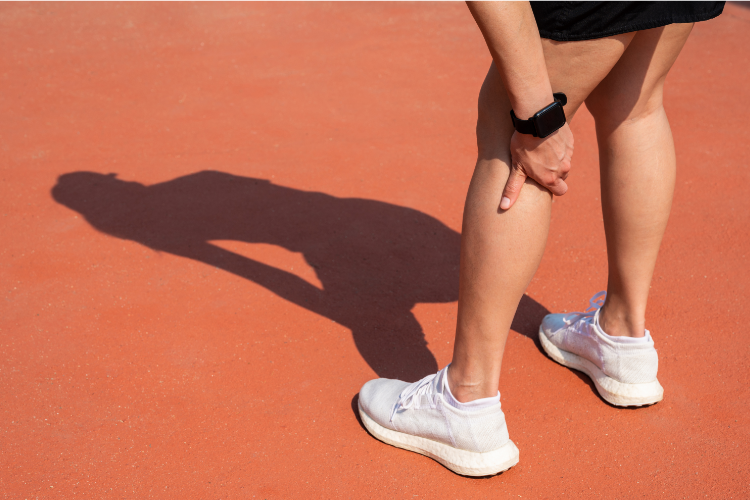
Healing From the Ground Up: How Upper Cervical Chiropractic Supports Hamstring Strain Recovery
Hamstring strains are among the most common injuries affecting athletes, dancers, and active individuals. These injuries can range from mild discomfort to severe muscle tears, leading to weeks—or even months—of restricted movement. While traditional treatments focus on stretching, strengthening, and rest, upper cervical chiropractic care provides an often-overlooked advantage in supporting recovery and preventing future injuries.
Dr. Lisa Olszewski from Precision Spinal Care in Chelsea, MI, explains how spinal alignment, particularly in the upper cervical region, plays a crucial role in muscle function and injury rehabilitation.
Understanding Hamstring Strains: More Than Just a Leg Injury
The hamstring muscles, located at the back of the thigh, play a critical role in running, jumping, and overall lower-body movement. A hamstring strain occurs when these muscles are overstretched or torn, often due to sudden acceleration, fatigue, or improper movement mechanics.
Symptoms of a hamstring strain may include:
- Sharp pain in the back of the thigh
- Swelling and bruising
- Difficulty walking or bending the knee
- Muscle weakness or tightness
While many assume a hamstring strain is solely a leg issue, the body functions as an interconnected system. Spinal misalignments, especially in the upper cervical region, can contribute to poor posture, altered movement patterns, and increased injury risk.
The Role of Upper Cervical Chiropractic in Hamstring Recovery

1. Enhancing Nervous System Communication
The nervous system controls muscle function and coordination. The upper cervical spine, home to the atlas (C1) and axis (C2) vertebrae, plays a key role in transmitting signals between the brain and the body. Misalignments in this region can interfere with nerve signaling, potentially leading to delayed muscle activation, improper movement patterns, and heightened risk of re-injury.
By correcting upper cervical misalignments, chiropractic care helps ensure that the brain can send clear, accurate signals to the hamstring muscles, allowing for better muscle coordination and recovery.
2. Improving Postural Alignment
Spinal misalignments can create imbalances that force the body to compensate in ways that put extra strain on the hamstrings. Poor posture—whether due to forward head position, an uneven gait, or spinal imbalances—can increase the likelihood of muscle fatigue and injury. Chiropractic adjustments help restore proper alignment, reducing unnecessary strain on the hamstrings and supporting long-term muscle health.
3. Reducing Muscle Tension and Promoting Flexibility
When the spine is out of alignment, certain muscles may overcompensate to maintain stability, leading to chronic tightness. Upper cervical chiropractic adjustments help reduce muscle tension by restoring balance to the spine and nervous system. This improved balance promotes flexibility, which is essential for preventing hamstring strains.
4. Supporting Faster Healing
Recovery from a hamstring strain involves more than just rest—proper circulation, nerve function, and muscle engagement are all critical components. Chiropractic care helps optimize these factors by improving blood flow and nerve signaling, potentially speeding up the healing process and reducing downtime.
How Upper Cervical Chiropractic Can Help Prevent Future Hamstring Injuries
- Correcting Biomechanical Imbalances: Spinal misalignments can lead to altered movement patterns, making certain muscles more prone to injury. Proper spinal alignment supports efficient, balanced movement.
- Enhancing Core and Pelvic Stability: The spine and pelvis work together to maintain lower-body function. Misalignments can throw off pelvic stability, affecting hamstring engagement and increasing injury risk.
- Optimizing Athletic Performance: A well-aligned spine ensures that muscles work in coordination, reducing the likelihood of strains, overuse injuries, and compensation patterns that lead to chronic tightness.
Additional Tips for Hamstring Strain Recovery
Along with upper cervical chiropractic care, consider these strategies to support healing and prevent re-injury:
- Stretch and Strengthen: Incorporate gentle stretching and strengthening exercises to improve flexibility and muscle resilience.
- Hydrate and Fuel Your Body: Proper hydration and nutrition support muscle recovery and reduce inflammation.
- Warm Up and Cool Down Properly: Dynamic stretching before exercise and static stretching afterward help keep muscles limber.
- Practice Good Posture: Stand and sit with your shoulders back and spine aligned to minimize strain on the lower body.
Precision Spinal Care: Your Partner in Recovery
At Precision Spinal Care in Chelsea, MI, Dr. Lisa Olszewski and her team specialize in upper cervical chiropractic care to support injury recovery and long-term musculoskeletal health. Serving Dexter, Grass Lake, Ann Arbor, and surrounding communities, they offer personalized care tailored to each patient’s needs.
If you’re struggling with a hamstring strain or looking for ways to prevent future injuries, upper cervical chiropractic care may be the missing piece in your recovery. Contact Precision Spinal Care today to learn how spinal alignment can enhance your healing and performance.
Medical Disclaimer:
This content is for informational purposes only and is not intended as medical advice, diagnosis, or treatment. Always consult your chiropractor, physician, or other qualified healthcare provider regarding your condition. Never disregard professional medical advice or delay in seeking it because of something you have read here.


Recent Comments